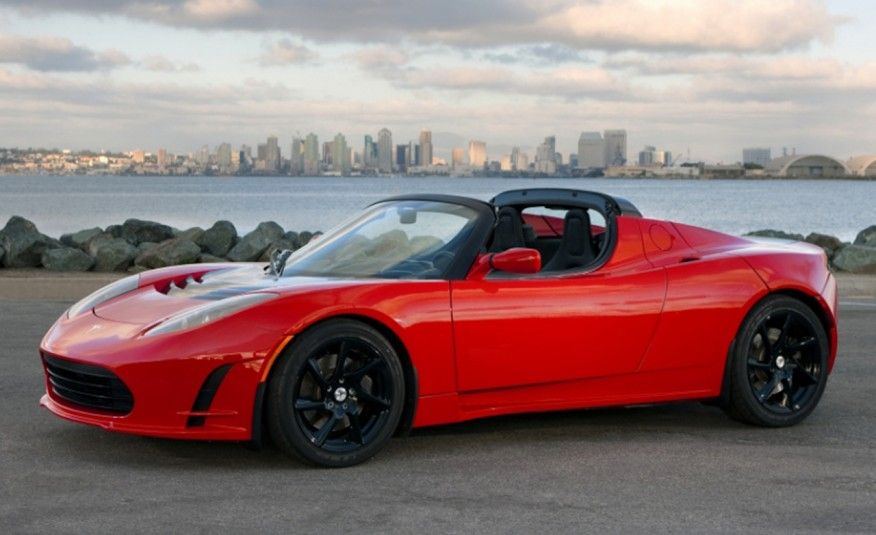 |
| GM EV1 |
Bob Lutz is nothing if not sure of himself. When GM created the
EV1 it was done as a large scale experiment. The results of that experiment was that he decided the time was not right for a large scale deployment of commercial EVs. The
EV1 was well received but on the whole, it wasn't really a viable transportation option unless a number of other pieces fell into place - primarily charging infrastructure and battery power density. He pulled the plug on the experiment, crushed all but a handful of
EV1s and let the markets ferment for a bit. Tesla, through cunning, funding, and sheer force of will, pushed EVs into the mainstream.
 |
| Tesla Roadster |
 |
| Bob Lutz w/ Chevy Volt Prototype |
Lutz recognized the advantages offered by EVs and how the market conditions had changed by then, largely because of Tesla. He gave the greenlight to the development of a plug-in hybrid that would eliminate the biggest complaint with most EVs...range. Eventually that vehicle was unveiled as the Chevy Volt.
 |
| Chevy Volt |
The vehicle would travel about 35 miles on electric battery power exclusively. When that was exhausted an on-board gasoline fueled generator would fire up and allow the vehicle to continue on for a few hundred more miles just as it's conventional Internal Combustion Engine (ICE) counterparts do. The 35 mile electric only range means that the vast majority of the miles that the car travels in its life will not produce any emissions. Most drivers in the US travel 38 miles/day or less. The Volt was the stepping stone that moved people over.
GM grossly over engineered the vehicle. They recognized that the Lithium Polymer battery was a weak spot in the design because there wasn't much known yet about how the large batteries behaved or how long they'd last. GM tested the batteries extensively and found that extreme swings in temperature and the number of full charge/discharge cycles were among the most significant factors affecting battery performance and longevity. To get around this limitations, engineers gave the Volt about 20-30% more battery than it actually needed. This meant that it would never fully charge/discharge. The battery would never need to work very hard. To keep it at a stable temperature, a liquid cooling system was used to regulate the temperature. All rechargeable batteries will degrade eventually. As the battery degrades, the controls in the Volt make more of the
battery's capacity available to ensure that the user doesn't experience loss of
capacity. As of 8/16, GM had zero reported cases of battery replacement due to loss of general capacity. There have been a few replaced due to component failures, but none that have suffered general capacity failure. The Volt has a small but extremely loyal, and satisfied, user base. The Volt has been ranked high or highest in customer satisfaction since its introduction, crash test ratings have similarly been among the best. Fuel economy obviously scores well. Reliability is the one that surprised me. For all the high-tech stuff in the Volt it has proven to be a surprisingly reliable car. Sure it's had a few quirks to work out, but this is new technology in uncharted waters, some bumps are to be expected.
So why doesn't everyone own a Volt!?!?! The Volt commanded a high price initially at $40k+ and had the misfortune of being released as GM was declaring bankruptcy from the largest financial collapse since the Great Depression. Bob Lutz was shown the door as part of GMs restructuring and the bailout by the US federal government. The Volt was his "swan song". The Volt received a flurry of publicity initially with high-profile celebrities making Volt purchases. The $40k price tag was a significant hurdle. The pluses outweighed the cons for the Volt though, and it sold reasonably well. Over time, the price dropped until it could be purchased for about $30k. Better still, the federal government created an income tax credit for purchasers of EVs based on EV range. The Volt is eligible for the full credit of $7500 making the price drop into the low to mid $20k range. Eventually, when enough are sold, the credit will go away and the Volt's price will return to the $30k range. It is still the best selling plug-in hybrid electric vehicle (PHEV). In 2016 a second generation Volt was released that provided a more powerful motor, more electric range and some additional features added to improve the Volt's standing. All of this adds up to a fantastic car, at a reasonable price that no one seems to know about. Those who do know about it generally love it and won't shut up about it. It's only real competition is from the Prius Prime plugin.
 |
| Prius Prime PHEV |
The Prius has half the range of the Volt on battery but better gas mileage afterward. Having driven a Prius, I can confirm that the Volt feels like a more significant vehicle. The Prius feels like a stripped down shell of a car. The Volt feels luxurious in comparison.







